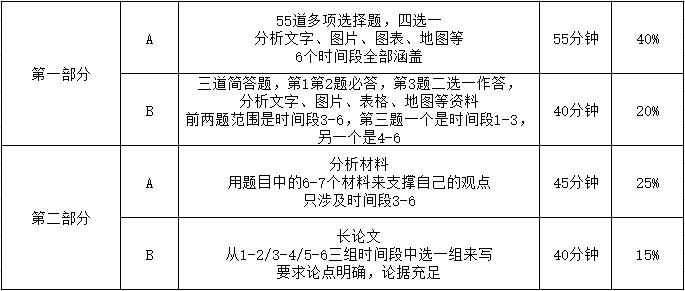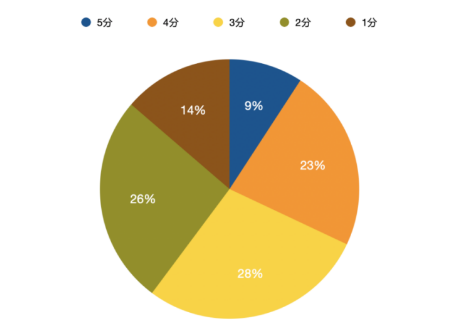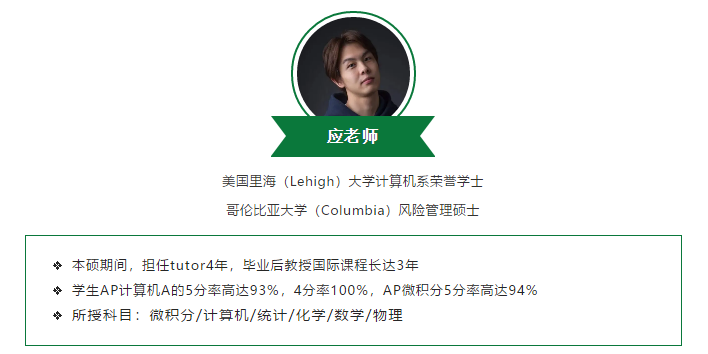
大家在复习AP世界史的时候要注意,不要把所有精力都放在经济发展、政治发展这样分量满满的知识,小众群体也历来是AP的考察重点。本文就通过一道AP世界史真题中选择题的解析,实力证明小众知识对于AP世界史考试的重要性。

AP历史有3门选课:世界历史,美国历史,和欧洲历史。
AP世界史学习主题:
主题1:人类与环境
主题2:文化发展与互动
主题3:治理
主题4:经济制度
主题5:社会互动与组织
主题6:技术与创新
AP世界史考试形式:
AP美国史、欧洲史和世界史的考试形式完全一样,考试时长、题型以及出题方式没有差别。前面提到的课程内容的时间段划分是很重要的,因为除选择题外,其余的题型都有时间段的限制。

从2019年起,AP世界史的现代部分会从公元1200年开始考起,而不是以前的公元1450年。这一部分会重点考察学员对非洲文明、美洲文明及亚洲文明现代时期的掌握。
除了考试内容的增加,AP世界史在考试形式上也有一些变化:
▶ 选择题部分由原来单个题目,变为一段材料或者地图附带一组选择题。
▶ 新增简答题。
▶ 论述题题型变为占总分15%。论述题需要学员形成论点并阐述,针对某一问题不同时段的比较分析。
题目:
“Let the blessings of Allah be upon Muhammad and his companions universally. In the year 1640 C.E. I wanted to behold the mystics of every sect, to hear the lofty expressions of monotheism, and to cast my eyes upon many books of mysticism. I, therefore, examined the Book of Moses, the Gospels, and the Psalms.
Among the Hindus, the best of their heavenly books, which contain all the secrets of pure monotheism, are called the Upanishads. Because I do not know Sanskrit, I wanted to make an exact and literal translation of the Upanishads into Persian*. For the Upanishads are a treasure of monotheism and there are few thoroughly conversant with them even among the Indians. Thereby I also wanted to make the texts accessible to Muslims.
I assembled Hindu scholars and ascetics to help with the translation. Every sublime topic that I had desired or thought and had looked for and not found, I obtained from these most ancient books. the source and the fountainhead of the ocean of religious unity, in conformity with the holy Qur’an.”
*Persian was the primary language used at the Mughal court.
Dara Shikoh, son of the Mughal ruler Shah Jahan, account of the translation of the Upanishads into Persian, 1657 C.E.Based on the passage, which of the following most strongly influenced Dara Shikoh'sreligious views
(A) Shi'ism
(B) Sufism
(C) Buddhism
(D) Zoroastrianism
AP世界史真题解析:
AP世界历史的选择题共55题,全部采用“一份材料+数道问题”的方式,所以一定要认真读材料,尤其题的答案一定在材料中。阅读时,先确定材料的出处、作者、观众、目的、时间、地区信息。
比如这份材料最后的部分“Dara Shikoh, son of the Mughal ruler Shah Jahan, account of the translation of the Upanishads into Persian, 1657 C.E.”告诉我们印度莫卧儿王朝的王子Dara Shikoh想要将印度重要经文“Upanishads奥义书”翻译为波斯文(莫卧儿王朝的官方文字),由此可判定这份材料与宗教有关,涉及到统治者的伊斯兰教和被统治地区的印度教。
有了这个预判,第二步我们来看题,题目问主人公Dara Shikoh的宗教观点,选项有伊斯兰教的两个分支 Shi’ism什叶派和Sufism苏菲派,还有源自印度的Buddhism佛教、源自波斯的Zoroastrianism祆教。接下来我们通过阅读正文部分来确定答案。
段中”Let the blessings of Allah be upon Muhammad and his companions universally.”通过其中Allah和Muhammad,可以确定主人公信仰伊斯兰教,因此可以排除CD。“I wanted to behold the mystics of every sect, to hear the lofty expressions of monotheism, and to cast my eyes upon many books of mysticism. I, therefore, examined the Book of Moses, the Gospels, and the Psalms”,为了达成三个目的,主人公阅读了圣经中的三个篇章the Book of Moses摩西五经, the Gospels福音书, and the Psalms诗篇。
但是这还不够,于是在第二段中表达想读印度本土重要经文the Upanishads奥义书,但是由于王子不懂梵文,所以必须要召集学者将其翻译为波斯文,第三段描述了这部奥义书对自己的重要意义。
看到这里,可能很多学员还是不知道这题的答案是A还是B。因为大家对伊斯兰教宗派的了解往往止于sunni逊尼派和shi’ism什叶派,所以很容易先入为主地选择A。这就掉进陷阱了,这题其实选B。正确的钥匙在前面提到的主人公的三个目的中“to behold the mystics of every sect, to hear the lofty expressions of monotheism, and to cast my eyes upon many books of mysticism.”
Dara Shikoh作为莫卧儿帝国之储君,百忙之中,抽出时间且大费周章地读那么多印度教、基督教的经典,目的就在于“ to behold the mystics of every sect & cast my eyes upon many books of mysticism”。注意这里出现了两次的mystic神秘主义。
其实Sufism苏菲派就是是伊斯兰教中的神秘主义派别的统称(其定义为:Islamic mysticism, defined as the inner mystical dimension of Islam)。公元7世纪时出现了通过主张苦行禁欲、虔诚礼拜、与世隔绝、无欲无求、安守清贫来反对阿拉伯帝国统治者越来越走上奢侈享乐生活趋势的小派别,到了8世纪逐渐发展为神秘主义,并通过融合古希腊、波斯、印度的各种哲学和宗教思想而形成的系统性的宗教理论,正式在伊斯兰教宗派中占有一席之地,并在圣战结束后成为传教的先锋。
所以要答对这道“冷门”题,首先要认真阅读材料,在大量文字中抓出主人公的目的中的关键词神秘主义,最重要的是必须对苏菲派的定义了解得非常清楚才行,否则只能选干扰项A了。

如上图,AP世界历史2020年的理想分为9.2%(低于美国史),4分率为22.8%(高于美国史),3分率为28.2%(高于美国史),2分率为26.1%(高于美国史),1分率为13.7%(低于美国史)。4分和理想分的总体占比为32%,几乎为所有考生的1/3,与美国史改革后的第一次考试出分相比,这是一个非常非常乐观的数字了,且可以看出虽然理想分难得,但4分还是比较好拿的。当然,如果目标排名靠前的学校,还是要以理想分为目标哟。
AP世界史真题与理想分介绍就到这里。 今年有计划考AP的同学,赶快抓紧winter vacation的时间开始波复习吧。CB已经确定今年AP会有2种考试形式——网考+机考,也就是说今年AP肯定不会取消啦。如果你还不知道如何利用剩下的复习时间,如果你还不清楚如何针对性复习考纲更新后的科目,点击预约试听【AP复习冲刺班】——
唯寻教学天团授课,
系统前测精准摸底,
为在校考生与自学考生定制课程
从近年真题中解码考点,
知识、方法与思维方式并重,
考试技巧和国际课程基础两手抓,
线上、线下课任意选择。


更多AP复习攻略点击

学习有方法,成长看得见
筑梦牛剑/G5/常春藤
